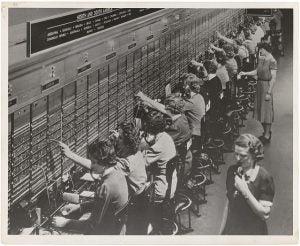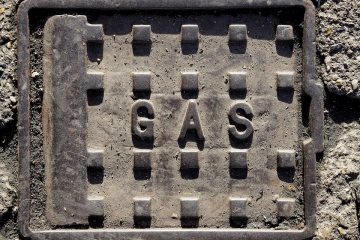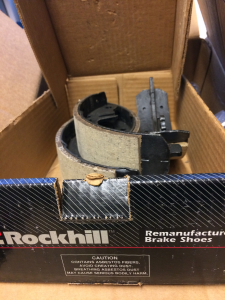California-Quebec carbon market participants appear to wait for future auctions and more information

California’s Alta Wind Energy Center, Image Source: flickr
Carbon auction results released today show low demand for California’s carbon allowances in the first carbon auction of 2017, with only 18% of allowances selling.
The results say more about the many milestones that are ahead for the cap-and-trade program rather than anything about the cap-and-trade program’s core function of reducing overall emissions.
Results from the February 22 auction show:
- The auction offered more than 65 million current vintage allowances (available for 2016 or later compliance) and sold about 11.6 million. Most of these allowances were utility-held allowances and some were from the province of Quebec. No ARB current allowances sold.
- Almost 10 million future allowances were offered that will not be available for use until 2020 or later; a little over 600,000 of those allowances sold.
- This means only about $8 million was raised for the Greenhouse Gas Reduction Fund.
Why cap and trade is working
Auction results themselves cannot tell us whether cap-and-trade is “working.” Though selling most allowances offered at stable prices at or above the minimum or floor price is generally a good sign, the reverse does not necessarily indicate that something went wrong with the cap-and-trade program itself. Disappointing auction result could simply be a product of the market’s expectation that more information on which to make an investment decision and plenty of allowances will be available in the future.
The best indicator is whether greenhouse gas emissions are declining.
The best indicator of whether California’s climate policies, including cap and trade, are working is whether greenhouse gas emissions are declining. As we reported in November’s auction blog, all indications suggest California’s policies are reducing emissions.
Another important factor is whether California’s economy continues to thrive as the state implements some of the most ambitious climate policies in the world. Recent data from the Bureau of Labor Statistics shows that in 2016, California continued to add jobs faster than the national average, as it has in every year that cap and trade has been in place.
So what explains current low demand
Outstanding litigation brought by the California Chamber of Commerce and others challenging California’s cap-and-trade program design is likely still hampering sales of allowances and negatively affecting the auction, as many participants may be waiting to see how the Court of Appeals rules on the legality of carbon market auctions. Oral Arguments were held in late January and a decision is likely by the end of April.
At the same time, Governor Brown in January asked the Legislature to extend the cap and trade program beyond 2020 with a two-thirds vote; the supermajority vote, also recommended by the independent Legislative Analyst’s Office, could insulate the cap-and-trade program from legal challenges like the one brought by the Chamber. Two bills currently in the Assembly – AB 378 (C. Garcia) and AB 151 (Burke) – could both facilitate the extension of cap and trade and be passed with a two-thirds vote. But we are still early in this process and the market is clearly still waiting to see how the Legislation plays out.
What we can understand from California’s February carbon auction
- Regulated businesses under the cap-and-trade program will have to purchase a large portion of available allowances in order to comply with the cap-and-trade program requirements. It appears they have just decided to deploy the wait-and-see strategy they utilized in May and August, perhaps hoping for more information perhaps in advance of the next auction.
- One thing that is different between this auction and the May auction that also saw similarly low demand, allowances prices on the secondary market were quite close to the current floor price of $13.57. This means that entities are still valuing carbon allowances close to the floor price, showing expectations of a steady market in the future, there just wasn’t quite enough demand to soak up all the supply in this auction.
- The November auction when 88% of allowances sold was the last time participants were able to buy allowances for $12.73 at auction instead of the 2017 floor price of $13.57. This opportunity for lower cost allowances seems to explain the higher demand in November.
- Importantly, the ARB allowances that went unsold represent a temporary tightening of the cap. They will not be offered again until two auctions have fully sold all available current allowances. This is an important self-regulating design feature of the cap-and-trade program that helps stabilize prices in the face of inevitable market fluctuations in supply and demand.
What to expect from 2017 auctions
Two major developments this spring may provide more certainty about the post-2020 cap-and-trade program, which we’ve noted before could significantly increase auction demand. First, there will likely be a decision from the appeals court on the California Chamber of Commerce case. There could also be more clarity on the bill or package of bills that could move through the Legislature this year.
The core functions of the cap-and-trade program are operating as intended, reducing carbon emissions while the economy thrives. But it remains to be seen whether the Legislature will be able to act to provide the highest level of certainty for the cap-and-trade market.


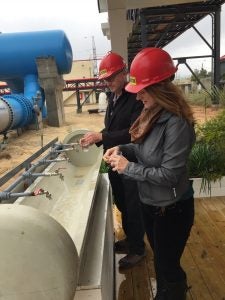
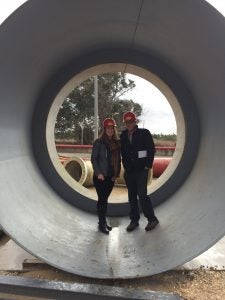
 (EDF Attorney Ben Levitan co-authored this post)
(EDF Attorney Ben Levitan co-authored this post) From coast to coast – and especially places in between – jobs were the most pressing concern for American voters. So Trump has promised he will create 25 million new ones over the next decade by, among other things, reviving America’s declining coal industry.
From coast to coast – and especially places in between – jobs were the most pressing concern for American voters. So Trump has promised he will create 25 million new ones over the next decade by, among other things, reviving America’s declining coal industry.